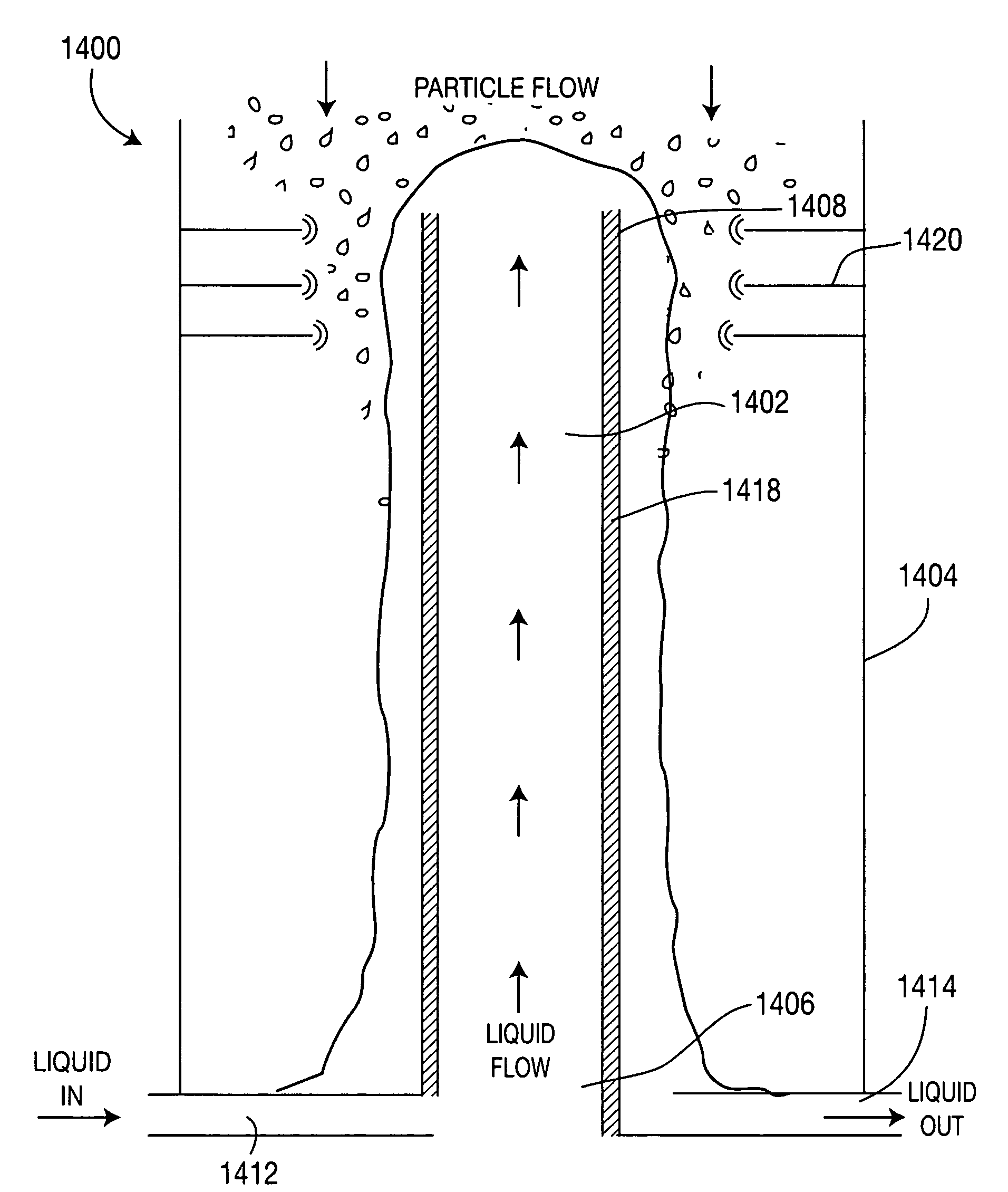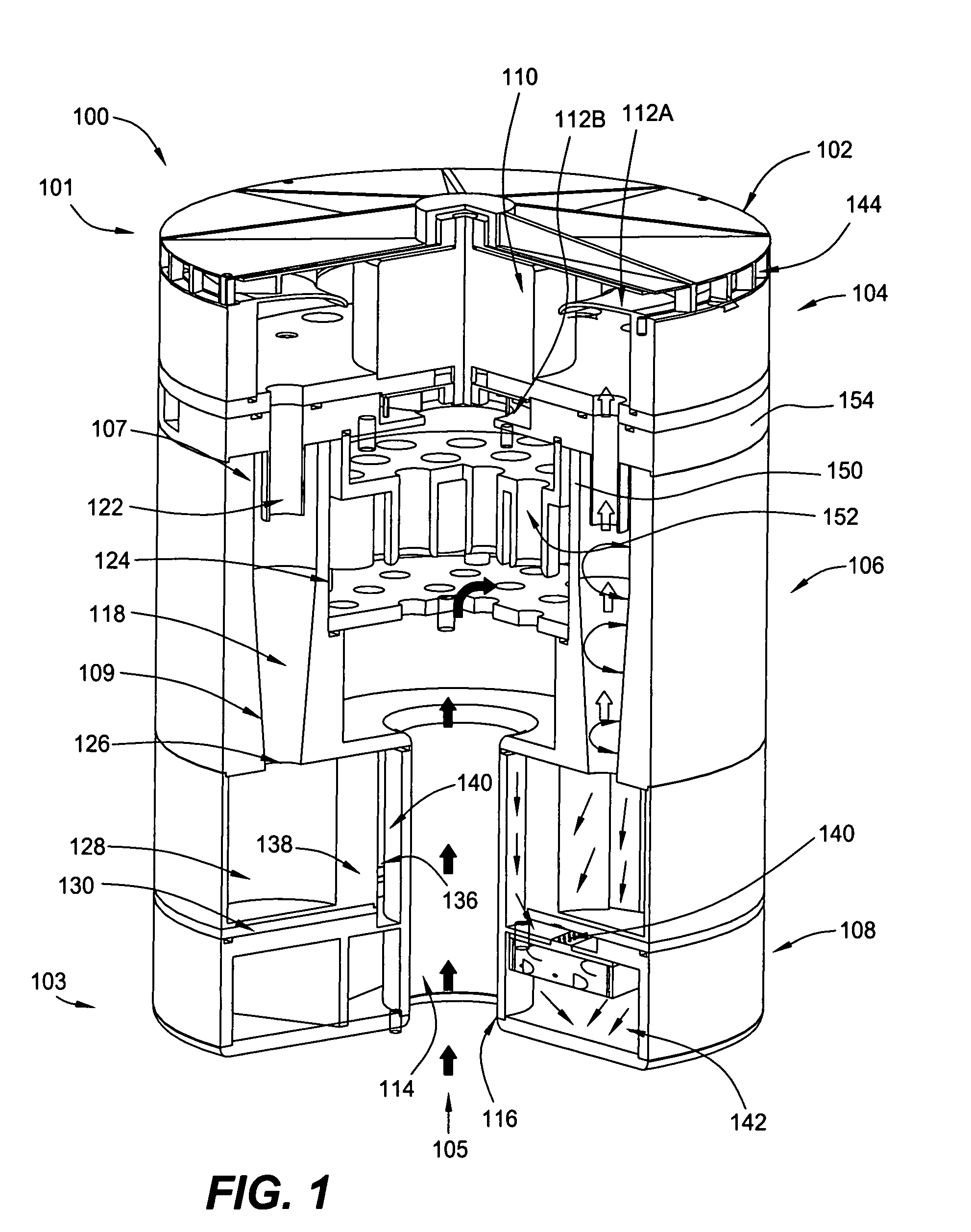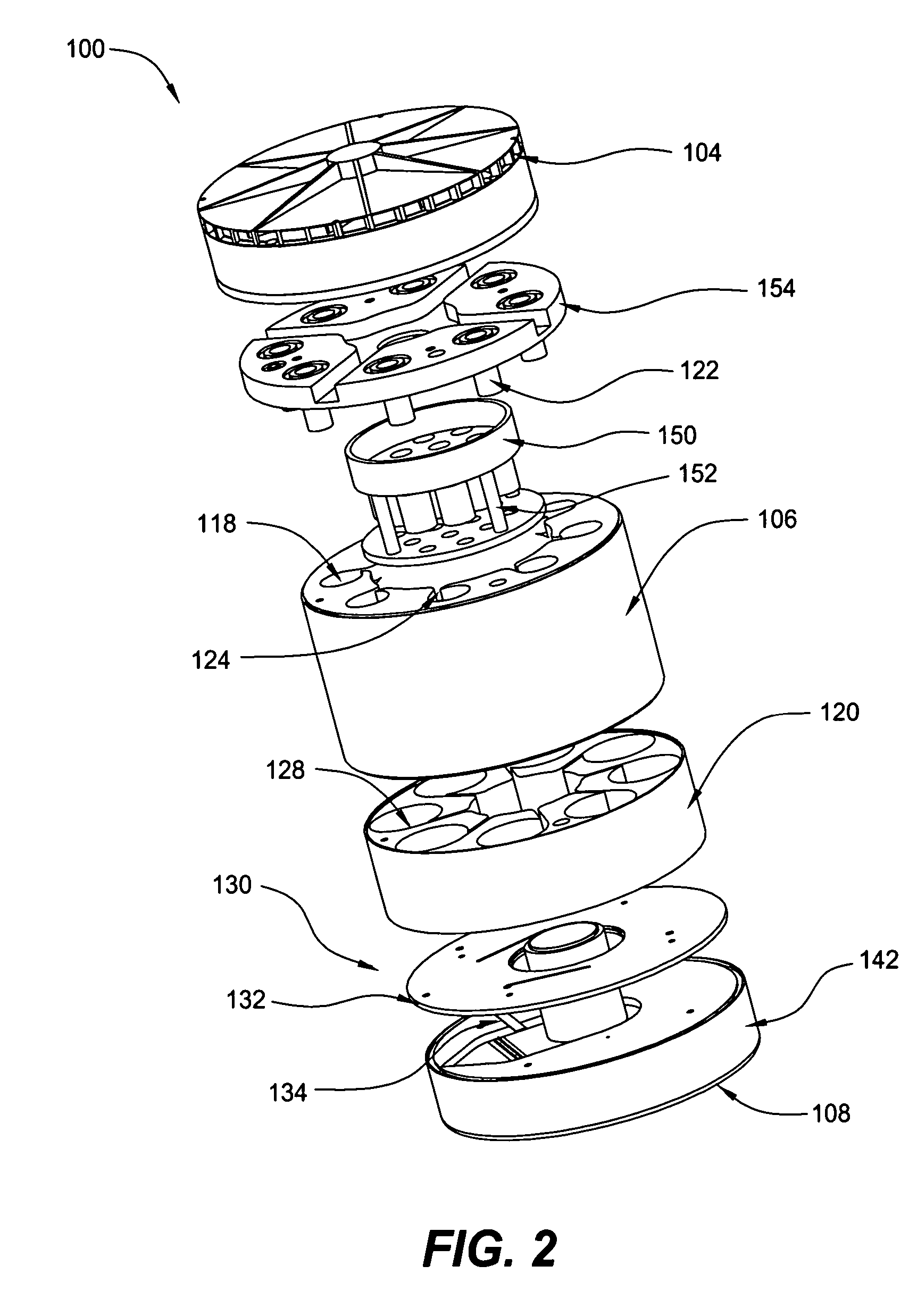Method and apparatus for airborne particle collection
a technology for collecting airborne particles and air, applied in the field of sampling air, can solve the problems of large liquid sample volume, high noise, and large volume, and achieve the effect of enhancing collection efficiency
- Summary
- Abstract
- Description
- Claims
- Application Information
AI Technical Summary
Benefits of technology
Problems solved by technology
Method used
Image
Examples
second embodiment
[0033]FIG. 7 is a schematic view of a collection section 700 including a corona charging section 702. In this embodiment, the collection section 700 includes a corona array 704 and electrode 706, a translating particle-collecting material such as a tape 708, a reservoir 710 and a particle removal device 712. In one embodiment, the collection tape 708 has a first surface 701 and a second surface 703, and is adapted to translate around several bearings 714 (e.g., three or more) in a closed loop. In one embodiment, the closed loop resembles a triangle. The corona array 704 and electrode 706 generate an electrostatic field 716 that drives particles through an aperture 722 in the channel 740 and onto the adjacent first surface 701 of the collection tape 708. The reservoir 710 is positioned adjacent the lower bearing or bearings 714 and is adapted to wick a thin layer 718 of fluid onto a first surface 701 of the tape 708 as it translates past or through the reservoir 710. The liquid layer...
third embodiment
[0034]FIG. 9 is a schematic illustration of a capture section 900 according to the present invention. The capture section 900 comprises a channel 902, a hydrophobic membrane 904, an electrostatic focusing electrode 906 and an electrophoretic electrode 908. The hydrophobic membrane 904 is substantially similar to that described previously herein, but is additionally made to be conductive and is embedded over a portion of the channel 902 adjacent the vortex breaker section (not shown). The electrophoretic electrode 908 is positioned across the channel 902 from the hydrophobic membrane 904. The electrostatic focusing electrode 906 is positioned outside of the channel 902, proximate the side on which the electrophoretic electrode 908 is positioned. A differential voltage V is applied across the channel 902 to create an electrophoretic pumping cell within the channel 902, between the hydrophobic membrane 904 and the electrophoretic electrode 908. An electrostatic effect created by the el...
fourth embodiment
[0048]a collection apparatus according to the present invention is illustrated in FIG. 11. The collection apparatus 1100 is substantially similar to the apparatus 800 illustrated in FIG. 8, but instead of an electrostatic precipitator section, the apparatus 1100 includes a condensation section 1102. In one embodiment, the condensation section 1102 comprises an evacuable volume 1104 that is adapted to cool and condense small airborne particles that escape from the cyclones 1106 along with the exiting primary flow. The condensation section 1102 may be adapted for coupling to an analysis or extraction device (not shown), for example by a port or connection that transports the condensed particles out of the apparatus 1100. Optionally, the apparatus 1100, or any of the alternate embodiments described herein, may include a detector section 1108 located adjacent to the capture section 1110 for retaining a device (not shown) to analyze the particles collected and condensed within the captur...
PUM
| Property | Measurement | Unit |
|---|---|---|
| diameter | aaaaa | aaaaa |
| thick | aaaaa | aaaaa |
| size | aaaaa | aaaaa |
Abstract
Description
Claims
Application Information
 Login to View More
Login to View More - R&D
- Intellectual Property
- Life Sciences
- Materials
- Tech Scout
- Unparalleled Data Quality
- Higher Quality Content
- 60% Fewer Hallucinations
Browse by: Latest US Patents, China's latest patents, Technical Efficacy Thesaurus, Application Domain, Technology Topic, Popular Technical Reports.
© 2025 PatSnap. All rights reserved.Legal|Privacy policy|Modern Slavery Act Transparency Statement|Sitemap|About US| Contact US: help@patsnap.com



